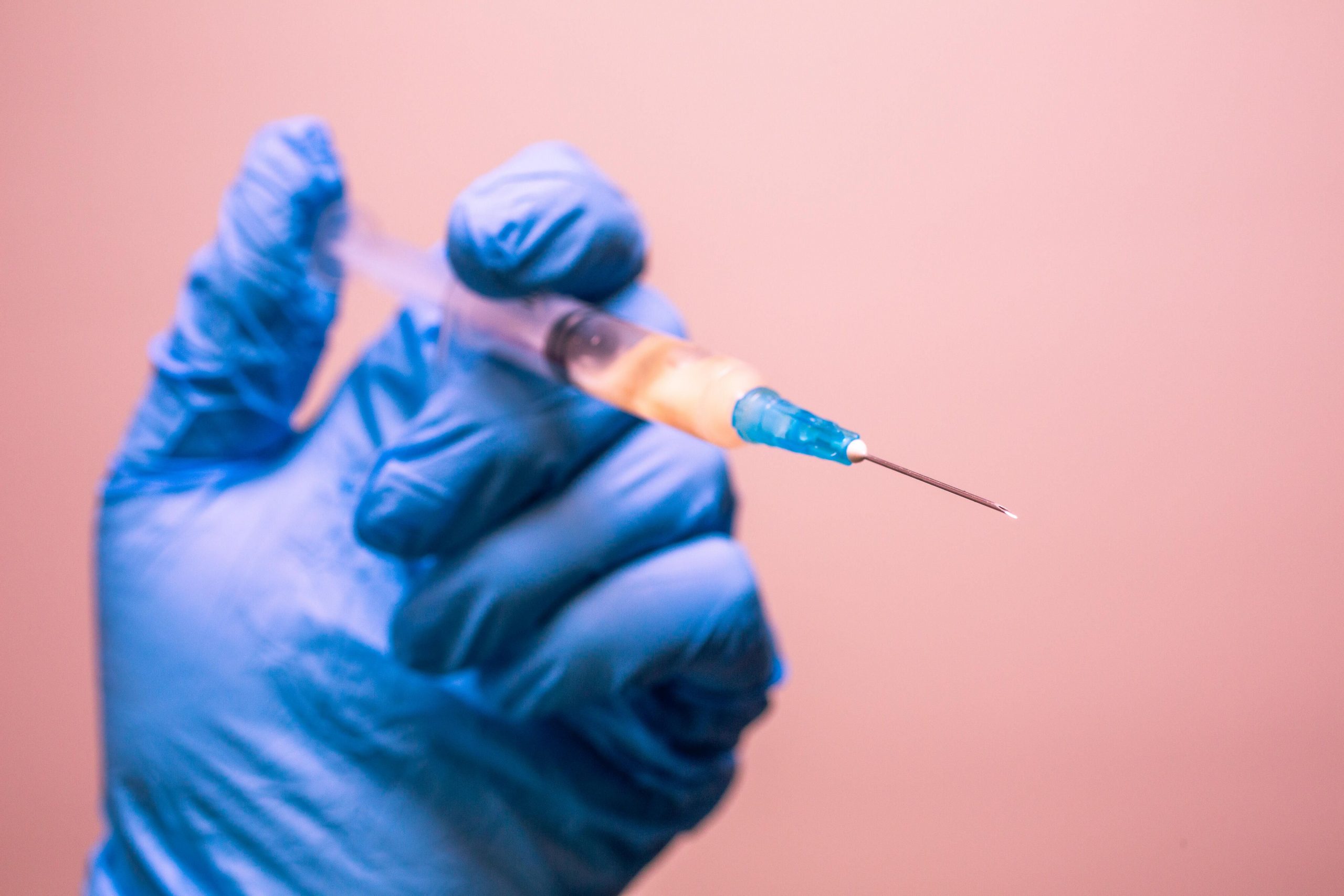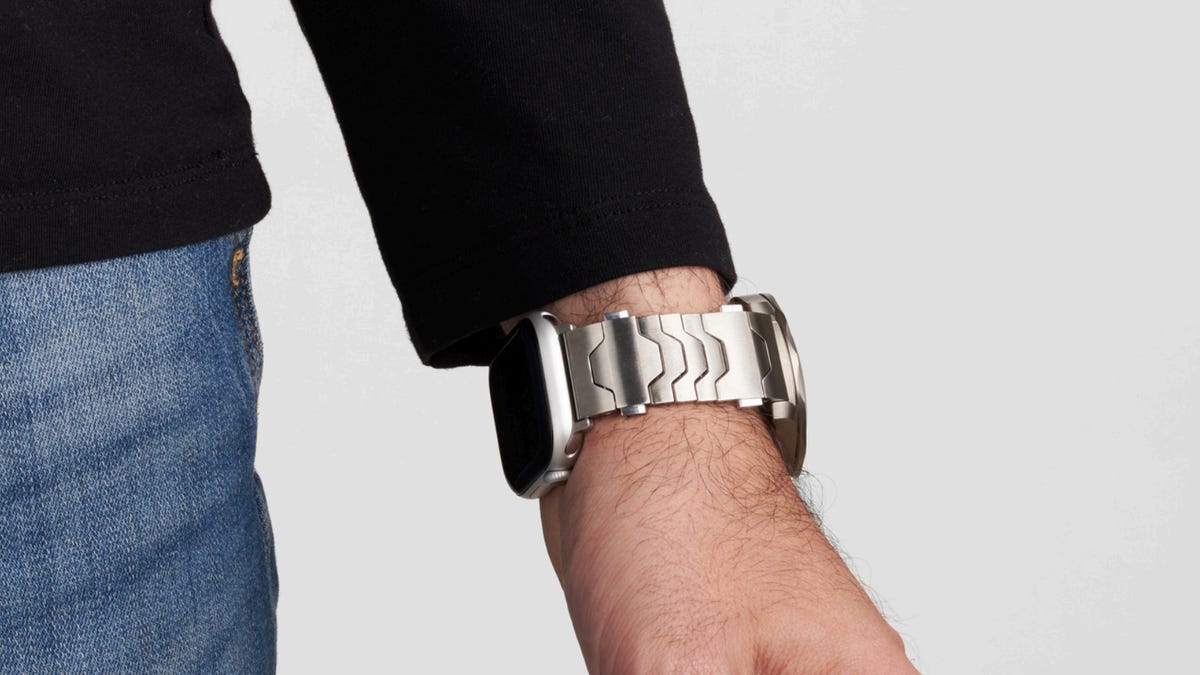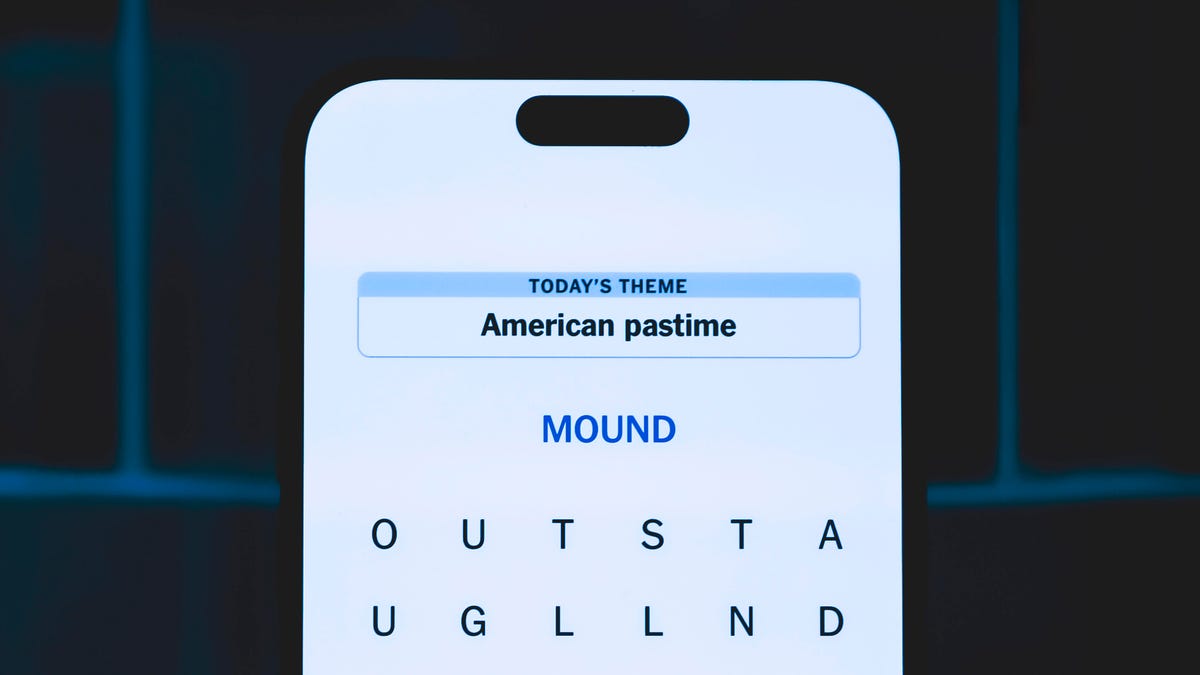Technologies
COVID-19 booster shots for the vaccinated: 8 things you need to know
A third vaccine dose is now available now for the most vulnerable. We’ll explain how many others could be in line to get a booster as early as next month.

Though the plan for COVID-19 booster shots still needs to be approved by the US Food and Drug Administration, those third jabs are coming. And they’re not just for people with compromised immune systems. On Aug. 19, the Biden administration announced it’s recommending that adults fully vaccinated with the two-dose Pfizer or Moderna vaccine get a third shot as a booster. The shots will start to be made available next month.
The booster will provide added protection to the fully vaccinated as the COVID-19 delta variant surges across the country. The plan comes as research shows that the effectiveness of the vaccines can decline. «Recent data makes clear that protection against mild and moderate disease has decreased over time,» US Surgeon General Vivek Murthy said. «This is likely due to both waning immunity and the strength of the widespread delta variant.»
The White House plan would allow for the booster shot eight months after receiving the second dose of the Pfizer or Moderna vaccine. The need for a booster shot for the one-dose Johnson & Johnson vaccine is also likely, though a plan hasn’t yet been made. Murthy says those who were vaccinated early on will be eligible for the booster first, and priority will go to those most vulnerable, including health care workers, nursing home residents and seniors.
What does all this mean in the US? Read on for what we know about COVID-19 booster shots today, including who can get them now, why they’re needed, how they relate to breakthrough infections and what the controversy has been surrounding third shots. We’ll be updating this as new information is released.
Who could qualify for the COVID-19 booster shot and when?
On Aug. 19, health officials with the Biden administration recommended an additional shot for American adults 18 and over who are fully vaccinated with the Pfizer or Moderna shots. The guidance follows reports from Israel that the protection the Pfizer vaccine provides may start to decrease after eight months.
However, the booster plan still needs to be evaluated and approved by the FDA, which will review the safety and effectiveness of a third dose of the Pfizer and Moderna mRNA vaccines. The plan is also pending recommendation by the Centers for Disease Control and Prevention’s Advisory Committee on Immunization Practices.
The administration is recommending a booster shot eight months after becoming fully vaccinated. So, for those who received their shots in January and February, that could be as early as mid-September. The booster vaccines are expected to be available the week of Sept. 20.
«We believe that that third dose will ultimately be needed to provide the fullest and continual extent of protection that we think people need from the virus,» Murthy said. «Our plan is to stay ahead of this virus by being prepared to offer COVID-19 booster shots to fully vaccinated adults 18 years and older.» Murthy said the FDA will evaluate booster shots for those younger than 18 years of age, and the administration will follow FDA recommendations for minors.
What about those eligible for booster shots now?
Some people who already are eligible under guidelines from the CDC can go out and get their third dose of a COVID-19 vaccine immediately. The list of immunocompromised people who can get a third shot includes solid organ transplant recipients or people who have an «equivalent level of immunocompromise» and who have a reduced ability to fight off infections, making them more vulnerable to the coronavirus. Booster authorization hasn’t yet been expanded more broadly to those with other chronic medical conditions.
The current CDC recommendation is for an additional dose of the two-shot vaccine for certain immunocompromised people, which is a small group. Within that category, the recommendation is for those 18 and older for the Moderna vaccine, and 12 and older for the Pfizer vaccine. The FDA didn’t authorize an additional dose of the Johnson & Johnson vaccine, and because of a lack of data, the CDC hasn’t recommend a second dose for immunocompromised people who got the one-shot vaccine.
About 3% of US adults are immunocompromised, according to the CDC, but research suggests they account for about 44% of hospitalized breakthrough cases of COVID-19. Not only are they more likely to get very ill from COVID-19, they also have a lower antibody response to vaccines and are at a higher risk of transmitting the virus.
Those with other conditions, like diabetes and heart disease, aren’t advised to get a booster, at least for now. Here’s a list of people the CDC recommends get an extra dose if they got the Pfizer or Moderna vaccine:
- Those with advanced or untreated HIV infection.
- Cancer patients and transplant recipients who are taking certain immunosuppressive drugs.
- Those receiving active cancer treatment for tumors or cancers of the blood.
- Those with moderate or severe primary immunodeficiency.
- Patients being treated with high-dose corticosteroids or other drugs that may suppress immune response.
- People who received a stem cell transplant within the last two years and are taking certain drugs. The CDC says to talk to your medical provider about your health condition and whether a third shot is appropriate.
If you’re unsure whether you’re qualified, the CDC says to talk to your medical provider about your health condition and whether a third dose is appropriate.
What about a Johnson & Johnson booster shot?
Administration officials said they expect those who received the one-dose Johnson & Johnson vaccine will also need another jab, but since it didn’t receive approval (and thus start being administered) until March, more research is necessary. «We expect more data on J&J in the coming weeks,» Murthy said. «With that data in hand, we will keep the public informed with the timely plan for J&J booster shots.»
Will the booster shots be free and readily available?
The current one-dose vaccine shot from Johnson & Johnson and two-dose vaccines from Moderna and Pfizer are free to anyone who wants to get vaccinated. And the additional shots will be free too. «These booster shots are free,» Biden said. «It will be easy. Just show your vaccination card and you’ll get a booster. No other ID. No insurance. No state registry requirements.»
«It will be just as easy and convenient to get a booster shot as it is to get a first shot today. We have enough vaccine supply for every American,» said White House COVID-19 response coordinator Jeff Zients, adding that those who are eligible will be able to get a booster at roughly 80,000 places across the country, including over 40,000 local pharmacies. Zients said 90% of Americans have a vaccine site within five miles of where they live.
What’s behind the need for COVID-19 booster shots?
«The COVID-19 vaccines that are authorized in the United States have been remarkably effective, even against the widespread delta variant. But we know that even highly effective vaccines become less effective over time,» Murthy said.
Calling the eradication of the COVID-19 virus «unlikely,» a UK scientific advisory group found (PDF) that there’s a «realistic possibility» that a variant will emerge that is resistant to the current battery of vaccines. Governments, public health organizations and vaccine makers are all tracking developments in coronavirus variants like delta and lambda, hoping to determine if booster shots targeting new variants will be needed among the general population.
What’s the relationship to COVID ‘breakthrough cases’?
As of July, in the US, «breakthrough» coronavirus cases caused by the dominant delta variant amount to less than 1% of people who are fully vaccinated. Both the Moderna and Pfizer vaccines have proved to be more than 90% effective against hospitalizations and death. Nonetheless, a CDC study shows that vaccinated people can both contract the highly contagious delta variant and spread it. According to a widely reported internal CDC memo, the delta variant spreads as easily as chicken pox, which is considered more contagious than the flu but less contagious than measles.
The surge in new COVID-19 cases is primarily affecting unvaccinated people and causing community spread, and in turn, prompting the return of mask mandates and guidance in hard-hit areas, even for people who have full vaccine protection. The debate over mask use and vaccine boosters underscores how scientists and other health experts continue to grapple with the uncertainties of COVID-19.
According to Murthy, «We are concerned that this pattern of decline we are seeing will continue in the months ahead, which could lead to reduced protection against severe disease, hospitalization and death.»
What’s the global controversy over booster shots?
Israel is now administering third doses of the vaccine to those 50 and older, and the UK has similar plans for September. However, this is resulting in a backlash among countries that are struggling to deliver first and second shots to residents.
World Health Organization Director-General Tedros Adhanom Ghebreyesus called for a «moratorium» on booster shots in high-income countries, citing the global disparity in vaccine distribution. Of the 4 billion doses administered globally, 80% have gone to high- and upper-middle income countries that make up less than half the world’s population, he said.
«We cannot accept countries that have already used most of the global supply of vaccines using even more of it, while the world’s most vulnerable people remain unprotected. We call on vaccine producers to prioritize Covax,» Tedros said, referring to the world’s COVID-19 vaccine distribution program.
White House Press Secretary Jen Psaki said on Aug. 17 that the US will have enough vaccines to both provide boosters for those who are fully vaccinated in the US and meet the global demand. «We have long planned from enough supply,» she said.
The US has so far shipped 115 million vaccine doses to 80 different countries, Zients said. «Our wartime efforts will continue doing everything we can to get even more people vaccinated both here at home and around the world. We can and must do both at the same time because that’s what it’s going to take to end this pandemic,» he said.
Is it possible to mix and match COVID-19 vaccines?
According to The New York Times, administration officials will recommend people get a booster of the same vaccine they originally received. The CDC now says a third dose of a different vaccine brand is permitted if a dose of the same type isn’t available.
Other global health agencies and countries are testing administered vaccines from two different manufacturers. In the UK, for example, a recent study found that those who received a first dose of the AstraZeneca vaccine and a second of Pfizer had a higher immune response than those who received two doses of the AstraZeneca vaccine.
While we watch how the situation develops, here’s what we know about the delta variant and info on whether you need to continue to wear a mask.
The information contained in this article is for educational and informational purposes only and is not intended as health or medical advice. Always consult a physician or other qualified health provider regarding any questions you may have about a medical condition or health objectives.
Technologies
This Two-Faced Watch Band Lets You Hide an Apple Watch Under Your Rolex
The $418 Smartlet literally bridges the gap between your elegant analogy and your nerdy smartwatch.

The Consumer Electronics Show is never short on ambitious ideas, but Smartlet may be one of the more unusual ones this year: a modular watch strap that lets you wear a traditional mechanical watch and a smartwatch on the same wrist, simultaneously. One on top of the other.
The Paris-based startup announced Smartlet at the 2026 CES in Las Vegas, pitching it as a solution for people who love the look of an analog watch but also want the practicality of a smartwatch for notifications, fitness tracking and mobile payments. Instead of choosing between the two, Smartlet’s system lets you mount an old-school timepiece on the front of your wrist while hiding a smartwatch or fitness tracker on the underside.
The stainless steel strap starts at $418 and doesn’t include a smartwatch or a mechanical watch. What you’re really buying is the strap system, which is compatible with most major smartwatches and fitness trackers, including Apple Watch, Samsung Galaxy Watch, Google Pixel Watch, Garmin models, Fitbit Charge devices and Whoop. On the analog side, it supports watches with lug widths from 18 to 24 mm, which includes high-end models from brands such as Omega, Tudor, TAG Heuer and Rolex.
The idea comes from founder David Ohayon, who says he was tired of having to play favorites every morning, choosing between his analog and Apple Watch. Smartlet, in theory, offers the best of both worlds, letting you toggle from fitness nerd to polished executive with the flick of a wrist.
In practice, it raises some serious questions, the biggest one being bulk. Smartlet says the system adds between 9 and 12 mm of height to the underside of the wrist once a connected device is attached. As someone who already manages to scratch watches without trying, the idea of strapping a second device to the underside of my wrist, where it regularly comes in contact with desks, armrests and tabletops, sounds like a walking nightmare.
There’s also the aesthetic. Smartlet is clearly aimed at what it calls the «modern gentleman,» with marketing language that leans heavily into luxury watch culture and phrases like «from the boardroom to the weekend.» Translation: This is a watch for wealthy men who want to show off their investment piece without sacrificing their gym gain tracking.
And while it may not be the most practical, or budget-friendly solution for most people, Smartlet is one of those highly niche, standout products that had us doing a double take at this year’s CES.
Technologies
Today’s NYT Strands Hints, Answers and Help for Dec. 25 #662
Here are hints and answers for the NYT Strands puzzle for Dec. 25, No. 662.

Looking for the most recent Strands answer? Click here for our daily Strands hints, as well as our daily answers and hints for The New York Times Mini Crossword, Wordle, Connections and Connections: Sports Edition puzzles.
Today’s NYT Strands puzzle has a holiday theme, and if you know a certain Christmas carol, you’ll quickly determine which words to hunt down. Some of the answers are difficult to unscramble, so if you need hints and answers, read on.
I go into depth about the rules for Strands in this story.
If you’re looking for today’s Wordle, Connections and Mini Crossword answers, you can visit CNET’s NYT puzzle hints page.
Read more: NYT Connections Turns 1: These Are the 5 Toughest Puzzles So Far
Hint for today’s Strands puzzle
Today’s Strands theme is: Carolers count.
If that doesn’t help you, here’s a clue: Five golden rings.
Clue words to unlock in-game hints
Your goal is to find hidden words that fit the puzzle’s theme. If you’re stuck, find any words you can. Every time you find three words of four letters or more, Strands will reveal one of the theme words. These are the words I used to get those hints but any words of four or more letters that you find will work:
- RIMS, HIMS, MARS, CHIME, CHIMES, MADS, DATE, DIAL, WAIL
Answers for today’s Strands puzzle
These are the answers that tie into the theme. The goal of the puzzle is to find them all, including the spangram, a theme word that reaches from one side of the puzzle to the other. When you have all of them (I originally thought there were always eight but learned that the number can vary), every letter on the board will be used. Here are the nonspangram answers:
- LORDS, MAIDS, SWANS, LADIES, PIPERS, DRUMMERS
Today’s Strands spangram
Today’s Strands spangram is CHRISTMASDAYS. To find it, look for the C that’s three letters down on the far-left row, and wind across.
Don’t miss any of our unbiased tech content and lab-based reviews. Add CNET as a preferred Google source.
Toughest Strands puzzles
Here are some of the Strands topics I’ve found to be the toughest in recent weeks.
#1: Dated slang, Jan. 21. Maybe you didn’t even use this lingo when it was cool. Toughest word: PHAT.
#2: Thar she blows! Jan.15. I guess marine biologists might ace this one. Toughest word: BALEEN or RIGHT.
#3: Off the hook, Jan. 9. Similar to the Jan. 15 puzzle in that it helps to know a lot about sea creatures. Sorry, Charlie. Toughest word: BIGEYE or SKIPJACK.
Technologies
Judge Blocks Texas App Store Age-Check Law
A preliminary injunction found the Texas law, set to begin Jan. 1, is «more likely than not unconstitutional.»

A new Texas state law set to take effect on Jan. 1 would have required app stores to implement age verification processes. But the law has been put on hold, at least temporarily, by a federal court judge.
As reported by the Texas Tribune, Senate Bill 2420, also known as the Texas App Store Accountability Act, is the subject of a temporary injunction issued by US District Judge Robert Pitman.
Pitman said in his decision that the law as written is broad, vague and «more likely than not unconstitutional.» However, he also wrote the court «recognizes the importance of ongoing efforts to better safeguard children when they are on their devices.»
Don’t miss any of our unbiased tech content and lab-based reviews. Add CNET as a preferred Google source.
The Texas law, signed into law by Governor Greg Abbott in May, requires app store operators — including Apple, Google, Nintendo, Steam and more — to build age verification processes for the storefronts and to only allow downloads to minors who obtain parental consent. The injunction is a ruling in an October lawsuit filed by the Computer & Communication Industry Association.
CCIA senior vice president Stephanie Joyce said in a statement, «This Order stops the Texas App Store Accountability Act from taking effect in order to preserve the First Amendment rights of app stores, app developers, parents, and younger internet users. It also protects parents’ inviolate right to use their own judgment in safeguarding their children online using the myriad tools our members provide.»
Other individuals and the advocacy group Students Engaged in Advancing Texas also filed suits over the law, the Texas Tribune reported.
App Store Accountability Act
The bill author, State Senator Angela Paxton, said the bill was meant to give parents «common sense tools to protect their kids and to survive court challenges by those who may have lesser priorities.»
The language of Texas Senate Bill 2420 does not only include mobile app stores from Apple or Google, but any «website, software application, or other electronic service that distributes software applications from the owner or developer of a software application to the user of a mobile device.»
By that definition, websites with links to browser games or mobile game consoles with download options would fall under the Texas law as written. The law also defines mobile devices as including phones and tablets, as well as any other handheld device capable of transmitting or storing information wirelessly.
The parental consent aspect of the law requires those under 18 to have an app store account affiliated with a parent or guardian to purchase or download applications.
Age verification elsewhere
In an effort to keep adult materials out of reach of minors and to protect children from potentially harmful content and interactions, tech companies have been compelled by law or through legal action to verify the age of users.
Roblox, which has a huge audience of minors, began rolling out stricter age verification after investigations and lawsuits hurt its reputation as a safe gaming space. Australia is perhaps the most large-scale example of a government restricting access to online content. In December, Australia began restricting social media access to those 16 and older. Reddit recently challenged that law.
In the US, age verification laws have primarily targeted adult sites. Texas already has a law on the books that requires adult sites to age-block their content. The Supreme Court upheld that law in a June ruling. The UK has also enacted age restriction rules for adult sites as have other US states.
-

 Technologies3 года ago
Technologies3 года agoTech Companies Need to Be Held Accountable for Security, Experts Say
-

 Technologies3 года ago
Technologies3 года agoBest Handheld Game Console in 2023
-

 Technologies3 года ago
Technologies3 года agoTighten Up Your VR Game With the Best Head Straps for Quest 2
-

 Technologies4 года ago
Technologies4 года agoBlack Friday 2021: The best deals on TVs, headphones, kitchenware, and more
-

 Technologies4 года ago
Technologies4 года agoVerum, Wickr and Threema: next generation secured messengers
-

 Technologies4 года ago
Technologies4 года agoGoogle to require vaccinations as Silicon Valley rethinks return-to-office policies
-

 Technologies4 года ago
Technologies4 года agoOlivia Harlan Dekker for Verum Messenger
-

 Technologies4 года ago
Technologies4 года agoiPhone 13 event: How to watch Apple’s big announcement tomorrow
